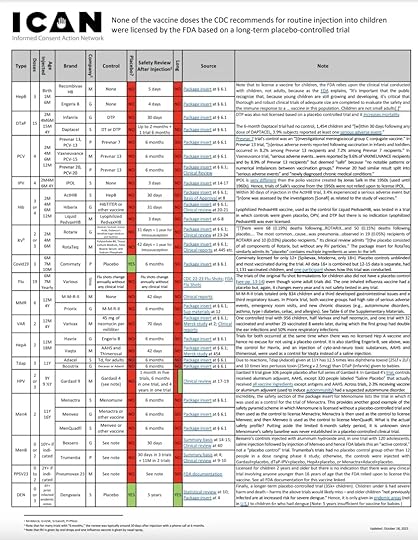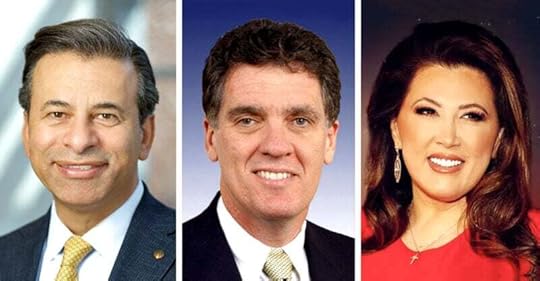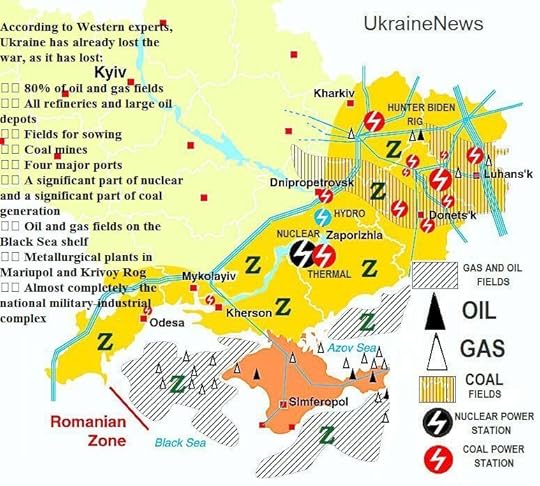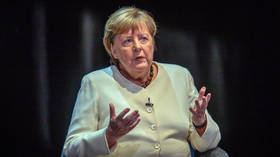Stuart Jeanne Bramhall's Blog: The Most Revolutionary Act , page 156
December 2, 2024
Mass Desertions Could End War in Ukraine

U.S. Medevac helicopter at An Khe, South Vietnam, 1970. Photo: Mike Hastie, Medic, Vietnam
Barbara G Ellis
NATO leaders have been dithering about Russia’s recent retaliation against Ukraine’s lofting one of Lockheed’s long-range missiles deep into its interior. Their emergency huddle was about Putin’s new multi-missile (“Oreshnik “) which traveled 10 times the speed of sound (range: 310-3,400 miles) to hit a former ICBM factory . So far, either side seems to have considered the one factor that could end their planet-destroying, nuclear game of chicken.
It’s the real possibility of monumental mutiny and desertions by those boots-on-the-ground that both sides count on to do the heavy lifting in WWIII.
Most soldiers may be willing to risk death by bullets and bombs, but not radiation exposure. Despite recent official assurances by U.S. war planners that nuclear weapons would be used only on battlefields, radiation drifts for thousands of miles. It ignores borders and body protections—as proved by Hiroshima in 1945 and the Chernobyl disaster of 1986.
Russian president Putin claimed Oreshnik’s speed makes NATO’s current defense systems powerless and said its production was imminent. But while the West’s missile designers set up a crash program to counter this latest escalation, these warhawks and their counterparts evidently still ignore the ever-expanding deserter numbers or silent mutinies abuilding in Ukraine and Russia. However, troops usually know military officials traditionally underestimate or conceal death rates lest it demoralize both them and the public to begin questioning the worth of continuing a war.
Current desertion rates in Russia by August were 18,000 and increasing daily, Newsweek reported. Russia’s death rate by September was said to be 71,000 by its independent media outlet Mediazona. The Economist in July put total casualties—dead/wounded/ captured—at between 462,000 and 728,000.
Small wonder then why Putin “borrowed” nearly 12,000 combat troops from North Korea in October for front-line duty. Equally, NATO members have promised troops as well. Many now on site as “advisors” for their equipment—tanks and munitions to aircraft—and infantry training.
Ukrainian desertions have now become legendary, along with increasing populations of neighboring Romania, Poland, and Germany. The Kyiv Post just reported some 60,000 alone are facing criminal charges of desertion since the war’s start in 2022. Thousands of others have not been caught nor wooed or forced back to the ranks. The Eurasian Review also noted Ukrainians on the 629-mile frontline were poorly armed and often out of ammunition. It commented:
“Ukraine’s military is now ‘Outgunned and Outnumbered’, struggling with low morale and high rate of desertions….This prolonged war nearing three years have near
decimated many Ukrainian infantry battalions, making the situation grim on the battle limes. Reinforcements are few and difficult to be created, leaving soldiers exhausted, demoralized and desert [ing].”
Not to mention the 44,000 draft-age Ukainian males who by August had slipped through border-police lines of other nations. The Wall Street Journal says 15,000 fled to mountainous Romania in particular.
[…]
Mutiny and desertions are ancient. Never say soldiers lack courage in confronting officialdom over orders or a war’s justification. They risk certain death. But if a mutiny is successful, a “cause” has been won. So there’s much to be said for it.
Indeed, our country was founded by a nationwide mutiny against Britain’s King George III. The eight-year (1775-83) war’s costs in blood (25,000 to 70,000 dead), disease and treasure ($1.141 billion in 2024 dollars ) from both the wealthy rebels who signed the Declaration of Independence—and most anti-British colonists. The situation is almost the same when other countries’ nationalists attempt to wrest national independance from foreign occupiers and exploiters.
[…]
Few Americans may know that by late 1780 George Washington’s bedraggled army of 26,000 suffered “desertions” by 11,000 tired of fights over pay, enlistment contracts, no clothing, and little food.
After three years of war, the fiery cause of independence could not keep them from going home or, worse, joining the British army for far better living and pay conditions. In early January 1781, Pennsylvania regiments led other states’ mutinous legions in a march to army headquarters in Princeton for redress about broken contracts, back pay, clothing—and immunity from court-martials.
They won by dint of numbers, leadership, organization, persistence, and the advantage of General George Washington’s desperate manpower needs and his fears of wholesale defections. That successful lesson also was learned in France through it took a blood-drenched revolution of 1793 to found a republic after centuries of kings.
Another great mutiny was equally bloody, but because of political differences among the rebels, it led to a civil war over leadership.
At WWI’s start in 1914, the long-brewing Russian revolution was quietly growing with both the war-weary, disheartened public and the army. Mutinous soldiers were committing large-scale internal sabotage: massive desertions, fraternization with
Germans and Austrians, theft of military and civilian supplies, drunkenness, and especially self-inflicted wounds. Some 350,000 were “finger-injured” out of the 2.6 million wounded.
Finally, in 1917 the revolution erupted March 8 with a great strike in Petrograd. Ordered to suppress strikers, the army refused and, instead, quickly joined them. That was the last straw for those on the Russian battle lines and trenches. They abruptly quit the war en masse and left for home, leaving the revolutionaries to liquidate the Romanoff rulers and replace them with a dictatorship of the Communists.
The greatest army mutiny in U.S history to date involved the 1955-75 Vietnam war. The troops and the American public were told repeatedly that the cause was to prevent a “domino effect” of Chinese Communism’s spread to Asia’s vast populations. “Better fight them there than here” was the government’s war cry to prop up Vietnam’s rulers and business leaders. But once the advance troops arrived, even buck privates could see an impoverished population ruled by a corrupt government in league with foreigners to export its rich natural resources .
Asians had been exploited for years by European colonialists. Vietnam’s rubber trees for France’s Michelin tires, for example, as well as rice, sugar cane, coal, iron ore, and tin. Mutiny by the Vietnamese against French control succeeded in May 1954, partitioning the country into north (Communist) and south (national) states. To “protect” the South’s resources from the North’s “reunion” plans, the U.S. intervened. It used over 543,000 troops by 1968 in the subsequent war that was to cost the U.S. 58,220 lives and a major defeat—all to retain business as usual in world markets.
Aside from opposing intervention in Asia after the Korean war—and with a draft—the basic cause of the army mutiny was the unfairness that always accompanies conscription even for a one-year “tour.” Exemptions went to students (especially divinity and medical), vital professions, conscientious-objectors, family men, the National Guard, and the physically and mentally unfit.
Add the traditional class separations of the privileged becoming officers; the poor, the uneducated, and minorities becoming infantry “cannon-fodder.” And race. Some 300,000 Blacks served (31% of ground troops), so that by 1965, thousands were militant and vocal against discrimination and their menial duties.
The huge anti-war movement in the States was more than matched by mutinous deeds of combat troops, marines, sailors, and airmen in Vietnam and U.S. bases around the world. Galvanized by those demonstrations and teach-ins at home, GIs organized informally to do the same, but at barrack conspiracies, discussions at nearby activist coffeehouses about resistance, and by hundreds of defiant underground newspapers (Fort Polk Puke, Semper Fi, A’bout Face, RITA Notes, The Bond, P.E.A.C.E., Duck Power, Aerospaced, etc.).
Overt actions ranged from thousands of combat refusals and do-nothing night patrols (“search and avoid”), incapacitation from narcotics and alcohol, and stockade riots to fraternizing with the enemy, disabling a ship by fire and dropping nuts, bolts, and chains into another’s main gear shaft. But above all—and viewed as the most effective—was “fragging” hated officers with fragmentation grenades. Secret warnings led to undermining their confidence and to field incompetence. Historically, wars have always had soldiers murdering officers perceived as endangering their comrades by incompetence or recklessness, as ISR associate editor Joel Grier points out.
Statistics on fragging incidents were not kept before 1969 and apparently it’s still difficult to pry any Pentagon forensics data about whether a shot in the back was from “friendly fire” or the Viet-Cong. And for good reason: low morale leads to depression and suicide or to mutiny and desertions. Hence, army fragging casualty numbers (incidents: 1,017; deaths: 86; wounded: 714) are still under dispute, though obviously undercounted by the Pentagon. After all, the unofficial rate was said to be at least one fragging per week.
The overall result of fragging was lax discipline by frightened officers and enraged and exhausted troops refusing to die—or suffer lifetime disabilities— for a cause few soldiers understood or believed in. Nor did most Americans at home. The choice troops made to mutiny de-escalated combat, and finally stopped the Vietnam War.
David Cortright, is a Vietnam veteran who authored perhaps the seminal book on the army’s resistance to that war (Soldiers in Revolt, 2005, Haymarket Books). He makes the timeless point to soldiers, civilians, Congressional warhawks, military officials—and particularly presidents, prime ministers and generals that:
“[The] central lesson of the GI movement…is that people need not be helpless before the power of illegitimate authority, that by getting together and acting upon their convictions people can change society and, in effect, make their own history” (243).
[…]
Via https://www.counterpunch.org/2024/11/29/mass-desertions-over-radiation-could-end-the-war-in-ukraine/
Combination Routine Childhood Vaccination Associated with Development of Asthma and Eczema

By Peter A. McCullough, MD, MPH
The University of Nottingham published a study from the West Midlands General Practice Database (n=29,238) and gave a the world a rare look at how unvaccinated children compared to those who received combinations of vaccines DPPT (Diphtheria, Polio, Pertussis, Tetanus) at months 2, 3, 4 and MMR (Measles, Mumps, Rubella) at 12 and 15 months.
The authors reported hazard ratios far in excess of two and attempted to adjust them by frequency of visits. I can tell you as an epidemiologist that the crude measures of association are far more important. For example, if an unvaccinated child is perfectly healthy without problems, then the visit rate to the clinic will be very low. In this group, there was a more than 10-fold increased risk with vaccination. Conversely vaccinated with asthma or eczema the visit rates will be higher.
As you can see from the table, both DPPT and MMR were significantly associated with the later development of asthma and eczema. These data suggest that children who undergo routine combination vaccination face higher risks of childhood allergic diseases. Conversely the unvaccinated have low or negligible risks. Going natural appears to be a healthier way to have a young child remain free of these common allergic diseases.
[…]
Via https://petermcculloughmd.substack.com/p/combination-routine-vaccination-associated
Sleepy Joe’s Hunter Pardon Is About Biolabs, Not Gun & Tax Charges

By Kelen McBreen
If Joe Biden wanted to clear his son Hunter from being convicted of lying on a background check while purchasing a gun and evading taxes, he could have done just that.
However, Sleepy Joe suspiciously cleared Hunter of ANY CRIMES he committed “or may have committed or taken part in between January 1, 2014, and December 1, 2024.”
As popular 𝕏 account @WarClandestine noted, the pardon covers the time period when the CIA and U.S. State Department began their 2014 coup in Ukraine, the same year the Hunter Biden-funded biolab company Metabiota started working with the Department of Defense to do coronavirus research in Ukraine.
Clandestine also suggested the pardon is meant to cover up more than just Hunter’s involvement in the bizarre biolab network, as the operation is tied to the American and Chinese governments and the release of the COVID-19 bioweapon.
[…]
Languages of the Silk Road and Beyond

Episode 14 Languages of the Silk Road and Beyond
Language Families of the World
Dr John McWhorter
Film Review
Regions involved in the ancient Silk Road trade developed their own discrete languages belonging to the Altaic family (with Turkic, Mongolian and Tungasic being the main subfamilies). At some point, all three have been the official languages (employing Chinese script) of China.
All Altaic languages put the verb at the end of sentences and use suffixes more commonly than prefixes.
Genghis Khan used Turkic languages in the countries he conquered and ruled.
The Turkic language began in Mongolia and spread east and west with the Mongolian conquests. The Huns spoke Turkic, and the Mughals who conquered India spoke Turkic in preference to Persian.
The people of the Anatolian peninsula initially spoke Hittite, then Greek, then Seljik Turkic, then Ottoman Turkish. Turkic has many different dialects that shade into one another, with even more word similarities than the Romance languages.
Sekiz, the Turish word for 8 is
səkkis in Azerbaijanisekis in Turkmansakkis in Uzbeksegrz in Kazaksäkkiz in UighurAltaic languages incorporate “vowel harmony” which means the vowel suffix for plurals changes depending on where the main vowel is formed in in the mouth. They also have “suffix sandwiches,” in which suffixes are combined to make a sentence out of a single long word.
They also have many loan words from Persian and Arabic. For example Altaic speakers often use Persian expressions in complex academic writing (eg mathematical principles).
In 1920, the founder of modern Turkey Kemal Ataturk took steps to solidify Turkey’s Western identity by switching Turkish script from the Arabic to the Roman alphabet and by purging Turkish (and substituting Turkish of all its Arabic and Persian words.
Mongolian – Mongolian didn’t spread beyond the homeland despite all the Mongol conquests because Genghis Khan and his successors used Turkic languages to rule the territories they conquered.
Kalmyk – Turkic language spoken in Russia. Ewak, the invented language used in Return of the Jedi is based on Kalmyk. Has verb variations for hypothetical actions similar to the Indo-European subjunctive.Tungasic languages – found in small scattered groups in Eastern China and Siberia. Manchu, the language of China’s ruling elite* for 300 years (until 1912) is a Tungasic language. Three hundred thousand residents of Xinjiang province still speak Manchu as a result of a Manchu garrison stationed there.*Rather than requiring their Chinese subjects to learn Manchu, the Manchu dynasty made extensive use of interpreters.
Film can be viewed free with a library card on Kanopy.
https://www.kanopy.com/en/pukeariki/watch/video/6120000/6120030
December 1, 2024
CDC Escalates Childhood Hyper-Vaccination Agenda for 2025

The 2025 Immunization Schedule was approved by ACIP and adopted by CDC Director Mandy Cohen on October 24, 2024:
Children are now recommended to be exposed to 36 vaccine doses from in-utero to age 2 (4 doses in the pregnant mother, 32 doses in the child from birth to age 2). By age 18, the CDC now advises over 70 doses when taking into account routine COVID-19 and flu injections. This represents a massive increase in recommended vaccine doses since the inception of the 1986 National Childhood Vaccine Injury Act giving vaccine makers full liability protection:

Since they enjoy full liability protection, pharmaceutical companies currently get their injections approved with no long-term, placebo-controlled trials. Follow-up periods range from just 3 days to 6 months, with most studies lacking a placebo group entirely. It’s evident that our regulatory agencies are compromised and are not prioritizing the public’s best interests:

Childhood hyper-vaccination is likely contributing to the skyrocketing autism rates:

The vast majority of American’s have clearly demonstrated their rejection of unnecessary and unsafe vaccines and likely won’t comply with the absurd ACIP schedule. A recent CDC report found that the vast majority of adults refuse COVID-19 genetic booster shots with no human data, as well as flu and RSV vaccines:

The ill-advised federal vaccine racket needs to be re-assessed based on proper scientific studies and restructured to protect the health of America’s children.
Nicolas Hulscher, MPH
Epidemiologist and Foundation Administrator, McCullough Foundation
Trump’s Picks for Surgeon General and Top Posts at FDA, CDC Earn Mixed Reviews

President-elect Donald Trump’s nominees to lead three key federal public health agencies “would help the incoming president shift the priorities of agencies that are linchpins in public health” — but they’re also “controversial,” according to NPR.
President-elect Donald Trump’s nominees to lead three key federal public health agencies “would help the incoming president shift the priorities of agencies that are linchpins in public health” — but they’re also “controversial,” according to NPR.
Trump tapped Dr. Marty Makary to head the U.S. Food and Drug Administration (FDA), Dr. Dave Weldon to lead the Centers for Disease Control and Prevention (CDC) and physician Dr. Janette Nesheiwat for surgeon general.
“The roles will be key to helping to enact Trump’s second term health agenda, which could include agency reform and changes to public health policies,” Axios reported.
The three agencies report to the U.S. Department of Health and Human Services (HHS). Earlier this month, Trump nominated Robert F. Kennedy Jr., founder of Children’s Health Defense (CHD), to lead HHS.
Weldon previously criticized COVID-19 vaccines and restrictions. Makary and Nesheiwat first expressed support for vaccines and other pandemic-related policies but have become more critical in recent years.
Kim Witczak, a drug safety advocate who has worked with the FDA as a consumer representative, addressed mainstream criticism of the nominations. She told The Defender that “the pharmaceutical and medical-industrial complex is very worried.”
She added:
“The pharmaceutical and food industries have faced little resistance from regulators and Congress. The strong pushback we’re seeing now suggests they fear what might happen under an administration willing to challenge the status quo.”
Dr. Joseph Varon, president of the Front Line COVID-19 Critical Care Alliance, told The Defender, “Leadership in these agencies is critical for fostering trust in public health and ensuring evidence-based policies. We hope the nominees are committed to transparency, innovation and addressing the ongoing challenges in healthcare, particularly the lessons learned from the COVID-19 pandemic.”
Makary: U.S. government the ‘greatest perpetrator of misinformation’
Makary, a public health researcher and surgeon at Johns Hopkins University, developed the surgical safety checklist, adopted by the World Health Organization and credited with saving many lives. Makary worked with the first Trump administration, including on surprise medical billing, NPR reported.
Earlier this year, Makary published “Blind Spots: When Medicine Gets it Wrong, and What It Means for Our Health.” The book highlighted evidence that many modern-day health crises in the U.S. were caused or hastened by the medical establishment.
According to The Gateway Pundit, “Makary was initially an advocate for the COVID vaccine but changed his perspective as more data became available.” NPR noted that Makary “voiced support for lockdowns early in the pandemic and encouraged universal masking” but later “became increasingly outspoken” against such policies.
In 2021, Makary called the Biden administration’s CDC “the most political CDC in history” for not being forthcoming with the public about COVID-19 and the vaccines. According to the , he criticized the CDC and Biden administration for their “unsupported claims” about COVID-19 vaccine effectiveness.
Makary has also been vocal about the potency of natural immunity to COVID-19, criticizing the medical establishment’s “complete dismissal of natural immunity.”
In May, he criticized The New York Times for being slow to report on the thousands of people injured by the COVID-19 vaccines.
Last year, Makary said during congressional testimony that “public health officials have made many tragic mistakes during the pandemic.” Those mistakes included ignoring natural immunity, dismissing the possibility of COVID-19 originating from a lab leak, closing schools, masking toddlers and “pushing boosters for young people.”
In September, Makary appeared alongside Kennedy at a congressional roundtable hosted by Sen. Ron Johnson (R-Wis.) on the chronic disease epidemic. During the roundtable, Makary said, “The greatest perpetrator of misinformation has been the United States government.”
In his announcement, Trump said Makary would work with Kennedy to “properly evaluate harmful chemicals poisoning our Nation’s food supply and drugs and biologics being given to our Nation’s youth, so that we can finally address the Childhood Chronic Disease Epidemic.”
Brian Hooker, Ph.D., CHD’s chief scientific officer, told The Defender Makary has a “steep learning curve regarding vaccines in general” but has taken “encouraging stances late in the pandemic about the COVID vaccine and countermeasures.”
Scott C. Tips, president of the National Health Federation, said Makary represents “a mixed bag of mainstream medicine and outside-the-box thinking.” He credited Makary for opposing “mandatory COVID-19 injection boosters” and criticizing the FDA’s rejection of natural immunity.
Epidemiologist and public health research scientist M. Nathaniel Mead praised Makary’s nomination. “You’d be hard-pressed to find a physician with a deeper understanding of what ails our healthcare system and what’s needed to restore integrity to the FDA after six decades of regulatory capture.”
“Makary seems uniquely positioned to bring meaningful change,” Witczak said. “He understands the systemic harm caused by overmedicalization and the corporate capture of healthcare. His history of challenging mainstream narratives during COVID shows he isn’t afraid to speak out.”
Weldon sponsored bill to ban mercury from vaccines
Dr. Dave Weldon is an Army veteran who served as a Republican member of the U.S. House of Representatives between 1995 and 2009.
In a statement, Kennedy praised Weldon’s experience, saying he “will bring the truth and transparency needed to restore the public’s confidence” in the CDC.
In 2007, Weldon sponsored a bill that would have banned mercury from vaccines, expressing concern about “an enormous inherent conflict of interest within the CDC,” because the agency promotes vaccination while assessing their safety.
According to Politico, Weldon also “raised concerns about the safety of the measles, mumps and rubella vaccine and Gardasil, Merck’s papillomavirus virus, or HPV vaccine.
While in Congress, Weldon also introduced legislation outlawing human cloning and helped secure a deal that banned patents on human organisms, including genetically engineered embryos, according to The Associated Press.
According to NPR, Trump said Weldon would “proudly restore the CDC to its true purpose, and will work to end the Chronic Disease Epidemic,” and “prioritize Transparency, Competence, and High Standards.”
John Gilmore, executive director of the Autism Action Network, said Weldon “was sounding the alarm on failures in the vaccine system 20 years ago.” He said Weldon attended conferences like Defeat Autism Now and listened to mothers of vaccine-injured children, which is “not a behavior many doctors are inclined to do.”
Hooker said he was “very encouraged” by Weldon’s nomination, and that he’d like to know more about Weldon’s position on “the bloated vaccine schedule as well as COVID-19 countermeasures.”
He credited Weldon with helping independent thimerosal researchers gain access to the Vaccine Safety Datalink, a collaborative project that monitors vaccine safety and conducts studies on vaccine side effects.
Hooker, who participated in that project, said “Our access to the VSD was rescinded months later because [the CDC] didn’t like our results, which included a definitive link between thimerosal and autism. Weldon indeed will need to implement myriad changes to the flawed and fraudulent process.”
Weldon is the first nominee for CDC director who will face a Senate confirmation process, due to legislation passed in 2022, NPR reported.
Nesheiwat: ‘egregious unethical & harmful’ to add COVID shots to childhood schedule
Nesheiwat, Trump’s nominee for surgeon general, is a medical contributor to Fox News and medical director at CityMD, a network of urgent care centers in New York and New Jersey.
Nesheiwat previously promoted the benefits of getting vaccinated against COVID-19 and other infectious diseases, NPR reported. According to The Gateway Pundit, Nesheiwat has since changed her position and her “recent statements indicate a significant shift in her perspective.”
In October 2022, Nesheiwat tweeted, “If CDC approves a COVID vaccine addition to the routine schedule of vax for kids, it will mark the most egregious unethical & harmful decision to children. No mandates. Especially for a vax that can’t prevent disease.”
Nesheiwat has also questioned the efficacy of the COVID shots, tweeting in February 2023, “Covid vax does not prevent disease like we once thought it did per the cdc /Pfizer etc.,” and has tweeted in support of natural immunity.
In a statement, Trump called Nesheiwat an advocate for preventive medicine and praised her “commitment to saving and treating thousands of American lives.”
Mead said Nesheiwat’s about-face on vaccines “shows she has the ability to think critically,” which could help her “serve as a bridge builder at a time of deep division.”
A ‘historic opportunity to shake up the establishment’
Calling healthcare in the U.S. “horribly broken,” Hooker said the three nominees will face several challenges if confirmed because federal public health agencies require reforms.
Hooker said:
“Corporate influence, including the corporate capture of these agencies, is the biggest problem to be tackled. First and foremost, we need to protect children … from the highly flawed policies of these agencies.
“All influences from Big Pharma, Big Food and Big Ag need to be completely rooted out and the whole edifice should be rebuilt brick-by-brick to include only those policies that help and never harm children.”
Gilmore said public health agencies should publicize “all the data they have available.” He also called for a ban on vaccine mandates. “We have to be able to sue in a real court for vaccine injuries,” he added.
Varon called for independent clinical trials and for “independent scientific inquiry and reducing undue influence from corporate or political pressures.” He also called for promoting early treatment protocols for emerging diseases and giving physicians “the flexibility to treat patients with evidence-based approaches.”
“This moment represents a historic opportunity to shake up the establishment,” Witczak said. “After years of feeling like leaders were paying lip service — or working against the public — I finally see hope for meaningful reform. It’s time to restore these agencies’ missions to serve the public, prioritize safety, and act with integrity.”
[…]
Justice Department Orders DEA to Halt Airport Searches Because of ‘Significant Issues’ With Cash Seizures

(Stringer/ZUMAPRESS/Newscom
The DEA paid one airline employee tens of thousands of dollars to snoop on travel itineraries and flag passengers for searches.
The Justice Department has ordered the Drug Enforcement Administration (DEA) to suspend most searches of passengers at airports and other mass transit hubs after an independent investigation found DEA task forces weren’t documenting searches and weren’t properly trained, creating a significant risk of constitutional violations and lawsuits.
The deputy attorney general directed the DEA on November 12 to halt what are known as “consensual encounter” searches at airports—unless they’re part of an existing investigation into a criminal network—after seeing the draft of a Justice Department Office of Inspector General (OIG) memorandum that outlined a decade’s worth of “significant concerns” about how the DEA uses paid airline informants and loose criteria to flag passengers to search for drugs and cash.
OIG Investigators found that the DEA paid one airline employee tens of thousands of dollars over the past several years in proceeds from cash seized as a result of their tips. However, the vast majority of those airport seizures aren’t accompanied by criminal prosecutions. This has led to years of complaints from civil liberties groups that the DEA is abusing civil asset forfeiture—a practice that allows police to seize cash and other property suspected of being connected to criminal activity such as drug trafficking, even if the owner is never arrested or charged with a crime.
The memo, released publicly today by the OIG, found that failures to properly train agents and document searches “creates substantial risks that DEA Special Agents (SA) and Task Force Officers (TFO) will conduct these activities improperly; impose unwarranted burdens on, and violate the legal rights of, innocent travelers; imperil the Department’s asset forfeiture and seizure activities; and waste law enforcement resources on ineffective interdiction actions.”
The OIG memo and directive is a victory for advocacy groups that oppose civil asset forfeiture, such as the Institute for Justice, a public-interest law firm that is currently litigating a class action lawsuit challenging the DEA’s airport forfeiture practices.
Dan Alban, a senior attorney at the Institute for Justice, says the OIG memo “confirms what we’ve been saying for years, and it confirms the allegations in our ongoing class action lawsuit against DEA over precisely these sorts of abusive practices, where they target travelers based on innocuous information about their travel plans, and then interrogate them and search their bags in what they call a ‘consensual encounter’ that is really anything but consensual in the high security environment of an airport.”
The OIG launched an investigation earlier this year following the Institute for Justice’s release of a video taken by an airline passenger who was detained and had his bags searched by the DEA at the airport. The passenger, identified only as David C., had already passed through a Transportation Security Administration (TSA) checkpoint and was boarding his flight when he was approached by a DEA officer who demanded to search his carry-on. When David refused to give permission, the agent declared he was detaining the carry-on bag, and David could either board his flight or consent to a search.
David missed his flight entirely and eventually consented to a search of his carry-on, which revealed no drugs or cash.
[…]
Ukrainian President Agrees for First Time to Cede Territory to Russia in Order to End War
 Jim Hoft
Jim Hoft
For the first time since the war began Ukrainian President Volodymyr Zelenzkyy announced that he would be willing to cede territory to Russia in order to end the Russia-Ukrainian/NATO war.
Zelenskyy added that the agreement would also recommend a “NATO umbrella” of protection for territory still under its control.
Via Disclose TV.
NEW – Ukraine’s Zelensky said he is willing to cede territory to Russia to end the war for the first time.https://t.co/pcFRxIIqV7
— Disclose.tv (@disclosetv) November 29, 2024
Zelensky made the comments in his first interview since Donald Trump won the 2024 presidential election. In his interview with Sky News he made the remarks that he would be willing to cede ground to Russia in exchange for NATO membership.
It is likely that Russia will not agree to Zelensky’s demands.
Ukrainian President Volodymyr Zelensky gave his first interview following Donald Trump’s victory in the U.S. presidential election. In the interview with Sky News, he suggested that he is willing to end the war with Russia in exchange for NATO membership, even if Russia does not… pic.twitter.com/ZmvnYIx5Qr
— Independent Raw Journalism (@TheUndercoverX) November 29, 2024
[…]
Did Russia and China Sever NATO Cables to Block an Attack and Delay World War 3?

By Unleashed News
By Guest Contributor Jason Sullivan at the Gateway Pundit | November 30, 2024
In a move that could have seismic implications for NATO’s strategic capabilities, two critical undersea communication cables in the Baltic Sea—lifelines of military coordination among NATO allies—were severed in what increasingly appears to be a calculated act of hybrid warfare. The timing of these incidents, coming mere hours after the Biden administration authorized Ukraine to use U.S.-supplied ATACMS long-range missiles against Russian targets, raises the unmistakable specter of a coordinated response by Russia, with China’s complicity, aimed at halting NATO’s ability to act decisively during a crucial moment in this escalating conflict.
The severing of these cables appears to be more than a mere act of sabotage. It may well represent a brilliant and calculated geopolitical move designed to delay NATO’s escalation until President Donald J. Trump, known for his aversion to endless wars and commitment to diplomacy, is sworn in as the 47th President of the United States on January 20, 2025.
A Timeline That Demands Attention
November 16, 2024: The Biden administration authorizes Ukraine to employ long-range ATACMS missiles to strike Russian targets, marking a significant escalation in the U.S.’s involvement in the war.November 17, 2024: The first of two undersea cables, the BCS East-West Interlink connecting Lithuania and Sweden, is severed.November 18, 2024: The C-Lion1 cable, which links Finland and Germany, is also cut.The proximity of these events is impossible to ignore. Within 48 hours of the Biden administration’s decision, NATO’s communication capabilities were significantly disrupted in a strategic region critical to European and global security.

Map by: TeleGeography. Notes by: Jason Sullivan
The Suspect: China ’ s Bulk Carrier Yi Peng 3
Enter the Chinese bulk carrier Yi Peng 3. Anchored suspiciously in international waters near the sites of both cable cuts, this vessel has been identified as a potential actor in the disruptions. Investigators suspect the ship’s massive anchor, potentially weighing several tons, was deliberately dragged across the seabed, ripping through these vital cables.
Despite Sweden’s urgent requests, the ship has remained anchored in place, with no indication that China will permit it to move into Swedish waters for inspection. Nor has any authority been allowed to board the vessel. This steadfast refusal to cooperate heightens suspicions of China’s involvement in what could be a coordinated act of sabotage in league with Russia.

Image by: VesselFinder
A Strategic Disruption of NATO Coordination
The severing of the C-Lion1 and BCS East-West Interlink cables has left NATO temporarily reliant on slower and less secure backup systems, such as satellite communications. These cables are not mere civilian communication lines; they are the backbone of NATO’s real-time military coordination between its Nordic and Baltic allies. By severing these lines, Russia and China have potentially achieved several strategic objectives:
Preventing a Coordinated NATO Attack:
The ATACMS authorization opened the door for Ukraine to strike deeper into Russian territory with precision-guided missiles, a move that likely prompted Moscow to fear an immediate escalation. By disrupting NATO’s ability to coordinate long-range strikes and joint operations, Russia has effectively bought time to regroup and respond without the looming threat of synchronized NATO aggression.
Demonstrating NATO ’ s Vulnerability:
This act underscores NATO’s reliance on undersea infrastructure and its vulnerability to hybrid warfare. The inability to restore real-time communication quickly between key member states like Finland, Germany, Lithuania, and Sweden places NATO in a precarious position during this critical window.
Delaying Escalation Until January 2025:
With President Donald Trump poised to take office in less than two months, Russia and China may see this as an opportunity to stall NATO’s war machine. Trump’s track record of avoiding entanglements and seeking diplomatic solutions could mean a potential cooling of tensions in the new year—a stark contrast to the escalation strategy pursued under the Biden administration.
How Critical Were These Cables?
C-Lion1 (Finland-Germany): A high-capacity line enabling secure communications and data transfer between Nordic countries and NATO’s central command in Germany. This cable is integral for military logistics and real-time decision-making.BCS East-West Interlink (Lithuania-Sweden): Provides vital connectivity between the Baltic states and NATO-aligned Sweden, crucial for regional security in a region bordering Russia.The loss of these cables has effectively hampered NATO’s ability to synchronize responses, share intelligence, and execute operations in the Baltic Sea, a theater of immense strategic importance. For Russia, this creates a temporary but critical advantage.
The Deliberate Success of Hybrid Warfare
The methods used—deliberately dragging a multi-ton anchor across undersea cables—are both rudimentary and effective. Given the size of the anchor and the shallow waters of the Baltic Sea, the likelihood of completely severing these cables was extraordinarily high. This was not an act of chance; it was a calculated move designed to ensure maximum disruption.
Repair Timeline: A Strategic Delay
Repairing undersea cables of this importance is no small feat. Current estimates suggest that full restoration could take 6–8 weeks, pushing the completion date to late January 2025 or beyond. During this time, NATO’s ability to respond to any Russian aggression remains severely compromised, leaving member states vulnerable and divided.
This delay plays directly into the hands of Russia and China, giving them a critical window to consolidate their positions and deter further escalation.
Conclusion: A Masterstroke of Strategic Timing
The severing of these undersea cables appears to be a masterstroke of hybrid warfare, executed with precision timing and strategic intent. By crippling NATO’s communications and coordination capabilities in the Baltic Sea, Russia and China have forced the alliance to pause and consider its vulnerabilities. This move buys critical time for both nations—time to avoid further escalation until a Trump administration potentially reorients U.S. foreign policy toward diplomacy over war.
The Biden administration’s authorization of ATACMS strikes may have been the spark, but the severing of NATO’s critical infrastructure could very well be the fuse that prevents the flames from spreading further—at least for now.
For Russia and China, this is more than a tactical victory; it is a demonstration of how hybrid warfare can tilt the balance in a conflict where every second counts.
Source Links
Submarine Cable Map – BCS East-West Interlink and C-Lion1https://www.submarinecablemap.com/multiselect/submarine-cable?ids=bcs-east-west-interlink%2Cc-lion1VesselFinder – Real-Time Tracking of Yi Peng 3
https://www.vesselfinder.com/vessels/details/9224984Wikipedia: 2024 Baltic Sea Submarine Cable Disruptions
https://en.wikipedia.org/wiki/2024_Baltic_Sea_submarine_cable_disruptionsWikipedia: C-Lion1
https://en.wikipedia.org/wiki/C-Lion1Wikipedia: BCS East-West Interlink
https://en.wikipedia.org/wiki/BCS_East-West_Interlink
[…]
November 30, 2024
Merkel blows a hole in Washington’s Nord Stream narrative
 FILE PHOTO: Angela Merkel. © Global Look Press / Keystone Press Agency / Michael Kappeler
FILE PHOTO: Angela Merkel. © Global Look Press / Keystone Press Agency / Michael Kappeler
By Rachel Marsden
Angela Merkel has just dropped a smoking gun into the pages of her new book. According to ‘Freedom: Memoirs 1954-2021’, published on November 26, Berlin was fully aware that Washington wanted to kill off Nord Stream. And that it was just using Russia as a scapegoat to steal a massive new energy market for itself.
“The United States argued that its security interests were affected by the building of the pipeline because its ally Germany would make itself too dependent on Russia. In truth, I felt that the United States was mobilizing its formidable economic and financial resources to prevent the business ventures of other countries, even their allies,” Merkel writes.
“The United States was chiefly interested in its own economic interests, as it wanted to export to Europe LNG obtained through fracking.”
This pretty much establishes that it was by premeditated design that Washington leveraged the Russian military operation in Ukraine as a convenient pretext to turn economic competitor Germany – and the EU more generally – into a vassal. But Merkel’s successor, Chancellor Olaf Scholz, and the rest of the German and European establishment, acted like Joe Biden was just coming to their rescue out of benevolence when he offered to sell them LNG to replace Russian gas – which turned out to cost several times the price, to the ongoing detriment of German and European industry and citizenry.
Biden had stood beside Scholz at a White House podium in February 2022, talking like a mafia boss, saying that “there will no longer be a Nord Stream 2” if Russia enters Ukraine. Then the pipeline just mysteriously blew up in September 2022. Germany still hasn’t found those responsible, though.
Hey, how about this guy who was standing right next to your chancellor? German President Frank-Walter Steinmeier awarded Biden the Order of Merit in October, citing Germany’s “friendship” with the US, and telling Biden that “under your leadership, the transatlantic alliance is stronger and our partnership is closer than ever.” Yeah, close. Like family. Where you can help yourself to stuff that isn’t yours and wreck it – like an entire German car industry or a pipeline. Or where you can disapprove of a relationship – like the one that Germany had with Russia.Or maybe one can even do both of these things at the same time, like Miami-based American businessman, Stephen Lynch, seems to be attempting to achieve by asking for the US government’s approval in bidding on Nord Stream 2, majority-owned by a subsidiary of Russia’s Gazprom, according to the Wall Street Journal. Now that Washington’s meddling has bankrupted the pipeline project and it’s set for the auction block, guess Lynch figures that maybe he can squeeze in between Russian gas and Germany’s desperation for cheap supply, with Uncle Sam’s blessing.
“This is a once-in-a-generation opportunity for American and European control over European energy supply for the rest of the fossil-fuel era,” Lynch told the WSJ. It’s also a chance for US interests to profit from, and exert control over, both the EU and Russia, by wedging themselves between the two like they’re a chaperone on a teenage movie date. “I haven’t heard of Gazprom wanting to put gas transportation infrastructure in the hands of the USA,” the Kremlin has said, putting a damper on Lynch’s ambitions, which are perfectly aligned with what Merkel now says has been America’s objective all along.
All these leads and Germany still hasn’t been able to nail the bad guys. Meanwhile, its official narrative continues to unravel. Just this week, Poland’s RMF FM News reported that researchers from the Military University of Technology in Warsaw found traces in water samples near the Nord Stream explosion site of TNT – trinitrotoluene – which is found in highly regulated military-grade explosives. Not exactly the kind of stuff that any random dude can just pick up at the local party store down the street along with other supplies for their big Friday night brewski bonanza.
Poland has long given major side-eye to the official Western narrative as it’s been dripping out, notably into the German and American press. As their story goes, a bunch of rogue Ukrainian army types just decided after getting hammered together one night in a pub to go play Aquaman in the Baltic Sea and trash Nord Stream all on their own like it was their ex’s new boyfriend’s car. Ukrainian leader Vladimir Zelensky and the CIA tried to stop them when they found out about the plans, but Zelensky’s top general, Valery Zaluzhny, just ignored them… and was then rewarded for doing so with an ambassadorship to Britain.
So where would these Ukrainian dudes have scored the military grade TNT? Because the Western press, notably Reuters, has already reported that Ukraine can’t produce it and that its global shortage is even a problem for making weapons… let alone supplying random Ukrainian guys looking for a good time on a terrorist bender after their booza-palooza.Meanwhile, Germany has blamed Poland for the fact that Berlin authorities haven’t been able to arrest any suspects, saying the ringleader and Ghost of the Baltic Sea (aka the “Vladimir Z”), fled from Ukraine to Warsaw. But Polish prosecutors say that’s Germany’s fault for not even giving the Polish border folks a heads-up until it was too late.
Poland has also said that Germany’s story of the Ukrainian suspects renting a boat called ‘Andromeda’ as their troublemaker trimaran is just stupid, with Poland’s top intelligence coordination official saying on record that they’ve found that the guys on that ship were just out for a good time and didn’t appear to “have anything close to military or sabotage-related training.”
Poland’s prime minister, Donald Tusk, has said that Germany should just “apologize and keep quiet” rather than trying to scapegoat Poland or some random Ukrainian boozehounds. Immediately after the attack, the current Polish foreign affairs minister, Radoslaw Sikorski, tweeted a widely-circulating photo of the Nord Stream damage. “Thank you, USA,” he added.
Even some German political leaders don’t sound like they’re buying the country’s official story. And now it seems that Merkel has just offered strong corroborating evidence – and major political cover – for Poland and Germany to finally agree on something.
[…]
Via https://www.rt.com/news/608402-merkel-us-nord-stream-narrative/
The Most Revolutionary Act
- Stuart Jeanne Bramhall's profile
- 11 followers



